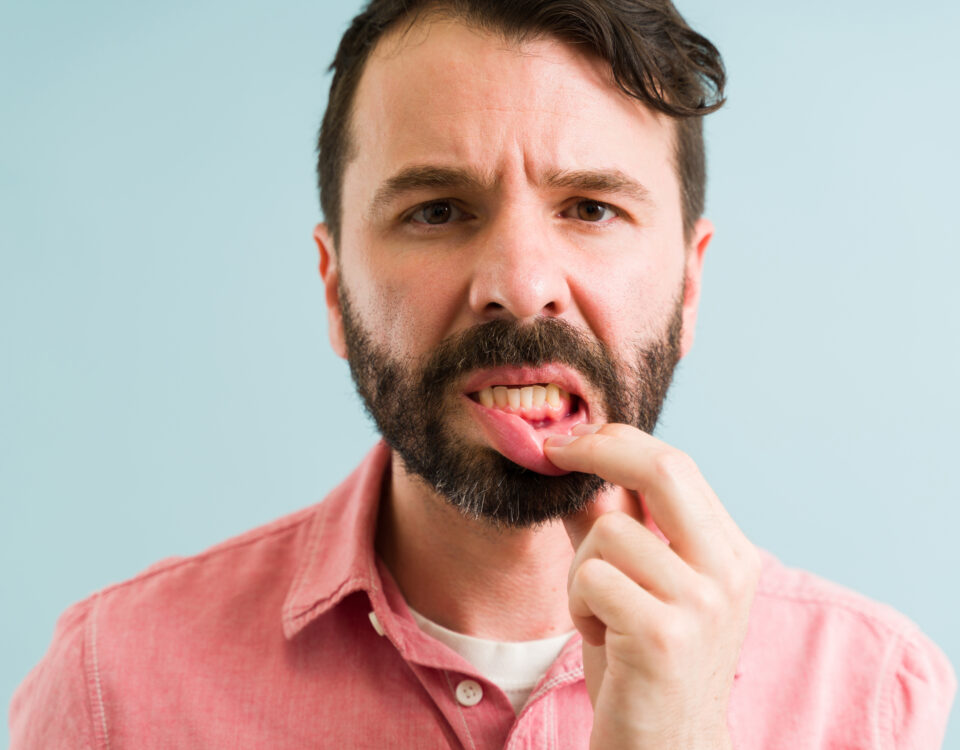Bleeding Gums: Normal or a Sign of Something More?

6 Reasons Not to Skip Your Dental Checkup
April 22, 2022
Dental Care Awareness Month: Protect Your Smile
May 5, 2022Bleeding Gums: Normal or a Sign of Something More?

It’s not always easy to tell when something is wrong with our health. This is especially true when it comes to oral health. Many people don’t even realize that bleeding gums can be a sign of something more serious. In this blog post, we will discuss the causes of bleeding gums and what you can do to prevent them from happening.
What are Bleeding Gums?
If you notice that your gums are bleeding when you brush or floss, this is called bleeding gums. There are a number of things that can cause this to happen, which we will go over in this article.
Causes of Bleeding Gums
One of the most common reasons for bleeding gums is plaque. Plaque is a sticky film of bacteria that forms on your teeth. If it’s not removed, it can harden and become tartar. Tartar is much harder to remove than plaque and can cause your gums to become inflamed. This is called gingivitis, and it’s the first stage of gum disease.
You may also experience bleeding gums if you:
- Have gingivitis, a disease that causes inflammation of the gums
- Brush too hard or your toothbrush isn’t soft enough
- Just started a flossing routine and your gums aren’t used to it yet
- Take certain medications, like blood thinners
- Have inflamed gums because you’re pregnant (pregnancy gingivitis)
- Have dentures that don’t fit well
- Faulty dental restorations
Stages of Gum Disease
There are three main stages of gum disease: gingivitis, periodontitis, and advanced periodontitis.
Gingivitis
Gingivitis is the mildest form of gum disease and is usually reversible with good oral hygiene practices. However, if it’s left untreated, it can progress to the more serious stages of gum disease. Treating this stage includes daily flossing and brushing, as well as regular visits to your dentist for professional cleanings.
Periodontitis
Periodontitis is the next stage of gum disease. At this point, the gums and bone around the teeth become infected. This can cause the gums to pull away from the teeth, creating pockets. These pockets collect bacteria and plaque, which can further damage the gums and bone. If periodontitis is left untreated, it can lead to the most severe stage of gum disease: advanced periodontitis. Treating this stage of gum disease includes a combination of professional cleanings with scaling and root planing, as well as at-home oral hygiene practices.
Advanced Periodontitis
At this stage, the damage to the gums and bone is irreversible. The teeth may become loose or fall out, which can cause other problems in your mouth, like difficulty chewing and speaking. Treating advanced periodontitis usually involves deep cleaning or surgery.
Treatment and Prevention
The best way to treat bleeding gums is by practicing good oral hygiene habits. This includes brushing your teeth at least twice a day, flossing once per day, and visiting your dentist for regular checkups and cleanings.
If your gum disease has progressed to periodontitis, you may need to see a periodontist for more aggressive treatment. This could include scaling and root planing, which is a deep cleaning of the teeth and gums. In some cases, surgery may be necessary to treat periodontitis.
To prevent bleeding gums, it’s important to brush and floss regularly. You should also avoid smoking, chewing tobacco, and using other tobacco products. If you’re pregnant or going through menopause, be sure to see your dentist for regular checkups so they can keep an eye on your gums.
Treating Bleeding Gums at Home
If you are experiencing bleeding gums, the first thing you should do is improve your oral hygiene habits. This means brushing your teeth at least twice a day and flossing once a day. You should also use an antibacterial mouthwash to help kill the bacteria that cause plaque.
If you are still experiencing bleeding gums after improving your oral hygiene habits, you should make an appointment with your dentist. They will be able to examine your gums to determine the cause of the bleeding and provide treatment, if necessary.
The Bottom Line
Bleeding gums can be a sign of something more serious. If you are experiencing this issue, improve your oral hygiene habits and make an appointment with your dentist. Remember that regular dental cleanings and checkups can help prevent bleeding gums in the first place.
Stop Bleeding gums with Mountain Aire Dentistry
At Mountain Aire Dentistry, we specialize in treating bleeding gums and all types of gum disease. Our experienced dentist, Dr. Chris Bockrath, is skilled at providing a wide range of treatments that can stop bleeding gums and prevent them from occurring in the first place.
If you’re experiencing bleeding gums, or want to schedule regular checkups and cleanings to prevent this issue, contact us today to make an appointment. Our friendly staff will be happy to answer any of your questions and help you get the treatment you need.
When you visit our Broomfield dental office, your smile is our top priority. Our Dentists invite you to experience the difference a warm and caring team can provide for you and your family. Enjoy a unique and comfortable dental experience designed to bring a healthier and happier smile back into your life. We invite you to call or visit our Broomfield dental office and discover the exceptional difference we offer to those we serve.













